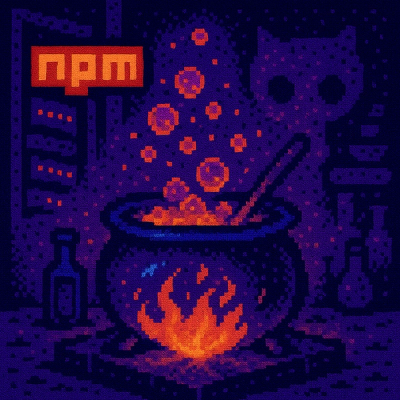
Research
/Security News
9 Malicious NuGet Packages Deliver Time-Delayed Destructive Payloads
Socket researchers discovered nine malicious NuGet packages that use time-delayed payloads to crash applications and corrupt industrial control systems.
Install: pip install lined
Building simple pipelines, simply.
And lightly too! No dependencies. All with pure builtin python.
A really simple example:
>>> from lined import Line
>>> p = Line(sum, str)
>>> p([2, 3])
'5'
A still quite simple example:
>>> def first(a, b=1):
... return a * b
>>>
>>> def last(c) -> float:
... return c + 10
>>>
>>> f = Line(first, last)
>>>
>>> assert f(2) == 12
>>> assert f(2, 10) == 30
Let's check out the signature of f:
>>> from inspect import signature
>>>
>>> assert str(signature(f)) == '(a, b=1) -> float'
>>> assert signature(f).parameters == signature(first).parameters
>>> assert signature(f).return_annotation == signature(last).return_annotation == float
Border case: One function only
>>> same_as_first = Line(first)
>>> assert same_as_first(42) == first(42)
Line's string representation (__repr__) and how it deals with callables that don't have a __name__ (hint: it makes one up):
from lined.base import Line
from functools import partial
pipe = Line(sum, np.log, str, print, pipeline_name='some_name')
pipe
Line(sum, log, str, print, unnamed_func_001, pipeline_name='some_name')
If you have graphviz installed, you can also do this:
pipe.dot_digraph()

And if you don't, but have some other dot language interpreter, you can just get the body (and fiddle with it):
print('\n'.join(pipe.dot_digraph_body()))
rankdir="LR"
sum [shape="box"]
log [shape="box"]
str [shape="box"]
print [shape="box"]
unnamed_func_001 [shape="box"]
sum -> log
log -> str
str -> print
print -> unnamed_func_001
Optionally, a pipeline can have an input_name and/or an output_name.
These will be used in the string representation and the dot digraph.
pipe = Line(sum, np.log, str, print, input_name='x', output_name='y')
str(pipe)
"Line(sum, log, str, print, pipeline_name='some_name')"
pipe.dot_digraph()

from lined import Line
pipe = Line(lambda x: x * 2,
lambda x: f"hello {x}")
pipe(1)
'hello 2'
But what if you wanted to use the pipeline on a "stream" of data. The following wouldn't work:
try:
pipe(iter([1,2,3]))
except TypeError as e:
print(f"{type(e).__name__}: {e}")
TypeError: unsupported operand type(s) for *: 'list_iterator' and 'int'
Remember that error: You'll surely encounter it at some point.
The solution to it is (often): iterize, which transforms a function that is meant to be applied to a single object, into a function that is meant to be applied to an array, or any iterable of such objects.
(You might be familiar (if you use numpy for example) with the related concept of "vectorization", or array programming.)
from lined import Line, iterize
from typing import Iterable
pipe = Line(iterize(lambda x: x * 2),
iterize(lambda x: f"hello {x}"))
iterable = pipe([1, 2, 3])
assert isinstance(iterable, Iterable) # see that the result is an iterable
list(iterable) # consume the iterable and gather it's items
['hello 2', 'hello 4', 'hello 6']
Instead of just computing the string, say that the last step actually printed the string (called a "callback" function whose result was less important than it's effect -- like storing something, etc.).
from lined import Line, iterize, iterate
pipe = Line(iterize(lambda x: x * 2),
iterize(lambda x: print(f"hello {x}")),
)
for _ in pipe([1, 2, 3]):
pass
hello 2
hello 4
hello 6
It could be a bit awkward to have to "consume" the iterable to have it take effect.
Just doing a
pipe([1, 2, 3])
to get those prints seems like a more natural way.
This is where you can use iterate. It basically "launches" that consuming loop for you.
from lined import Line, iterize, iterate
pipe = Line(iterize(lambda x: x * 2),
iterize(lambda x: print(f"hello {x}")),
iterate
)
pipe([1, 2, 3])
hello 2
hello 4
hello 6
Toddlers write lines of code. Grown-ups write functions. Plenty of them.
Why break lines of code into small functions? Where to start...
lined sets you up to take advantage of these goodies.
Note this line (currently 117) of lined/base.py , in the init of Line:
self.funcs = tuple(map(fnode, self.funcs))
That is, every function is cast to with fnode.
fnode is:
def fnode(func, name=None):
return Fnode(func, name)
and Fnode is just a class that "transparently" wraps the function.
This is so that we can then use Fnode to do all kinds of things to the function
(without actually touching the function itself).
@dataclass
class Fnode:
func: Callable
__name__: Optional[str] = None
def __post_init__(self):
wraps(self.func)(self)
self.__name__ = self.__name__ or func_name(self.func)
def __call__(self, *args, **kwargs):
return self.func(*args, **kwargs)
FAQs
Building simple pipelines simply.
We found that lined demonstrated a healthy version release cadence and project activity because the last version was released less than a year ago. It has 1 open source maintainer collaborating on the project.
Did you know?

Socket for GitHub automatically highlights issues in each pull request and monitors the health of all your open source dependencies. Discover the contents of your packages and block harmful activity before you install or update your dependencies.

Research
/Security News
Socket researchers discovered nine malicious NuGet packages that use time-delayed payloads to crash applications and corrupt industrial control systems.

Security News
Socket CTO Ahmad Nassri discusses why supply chain attacks now target developer machines and what AI means for the future of enterprise security.

Security News
Learn the essential steps every developer should take to stay secure on npm and reduce exposure to supply chain attacks.